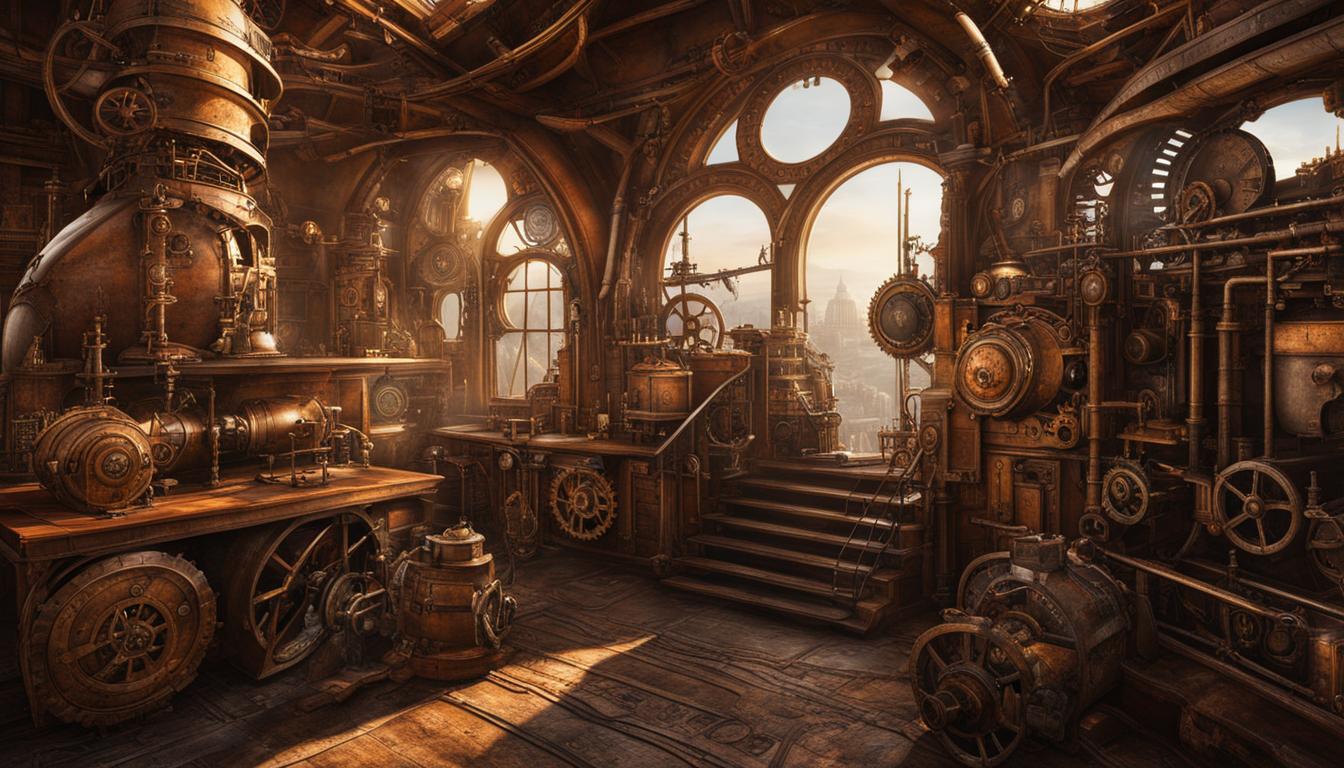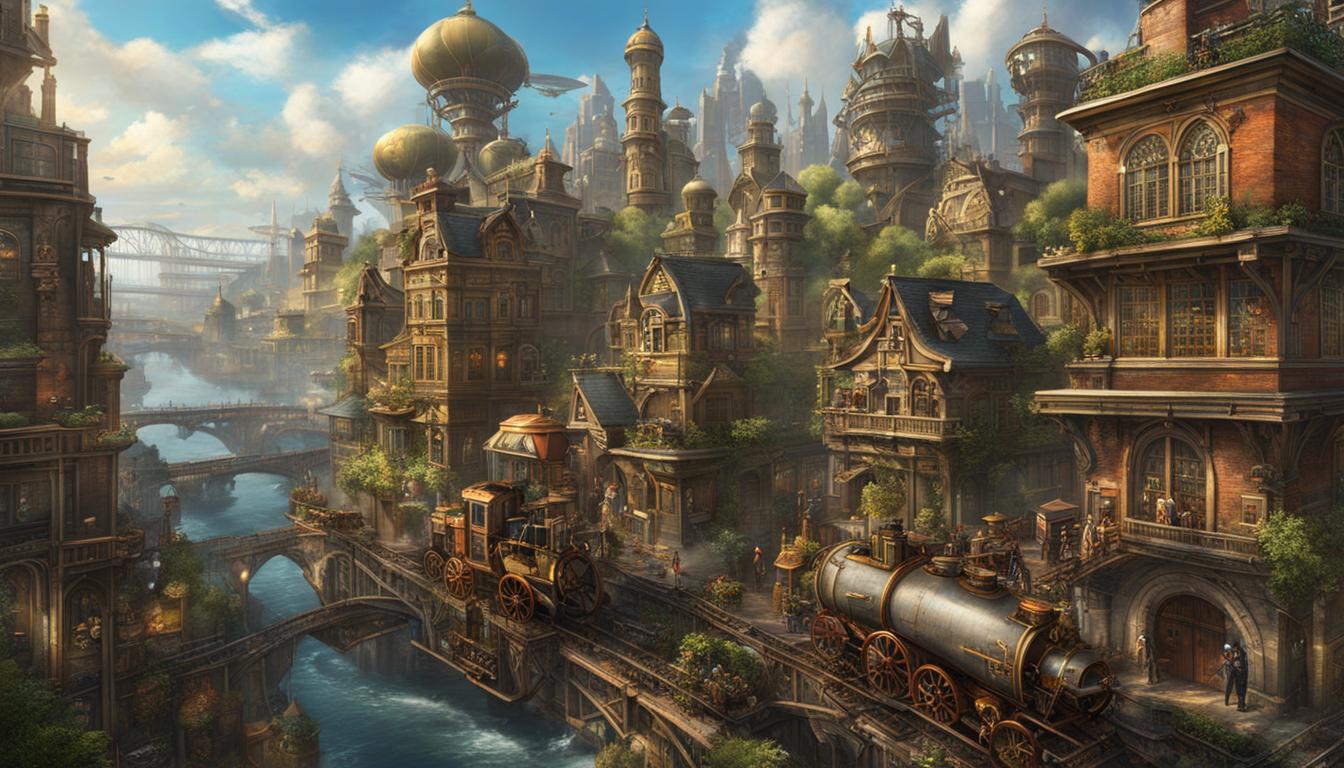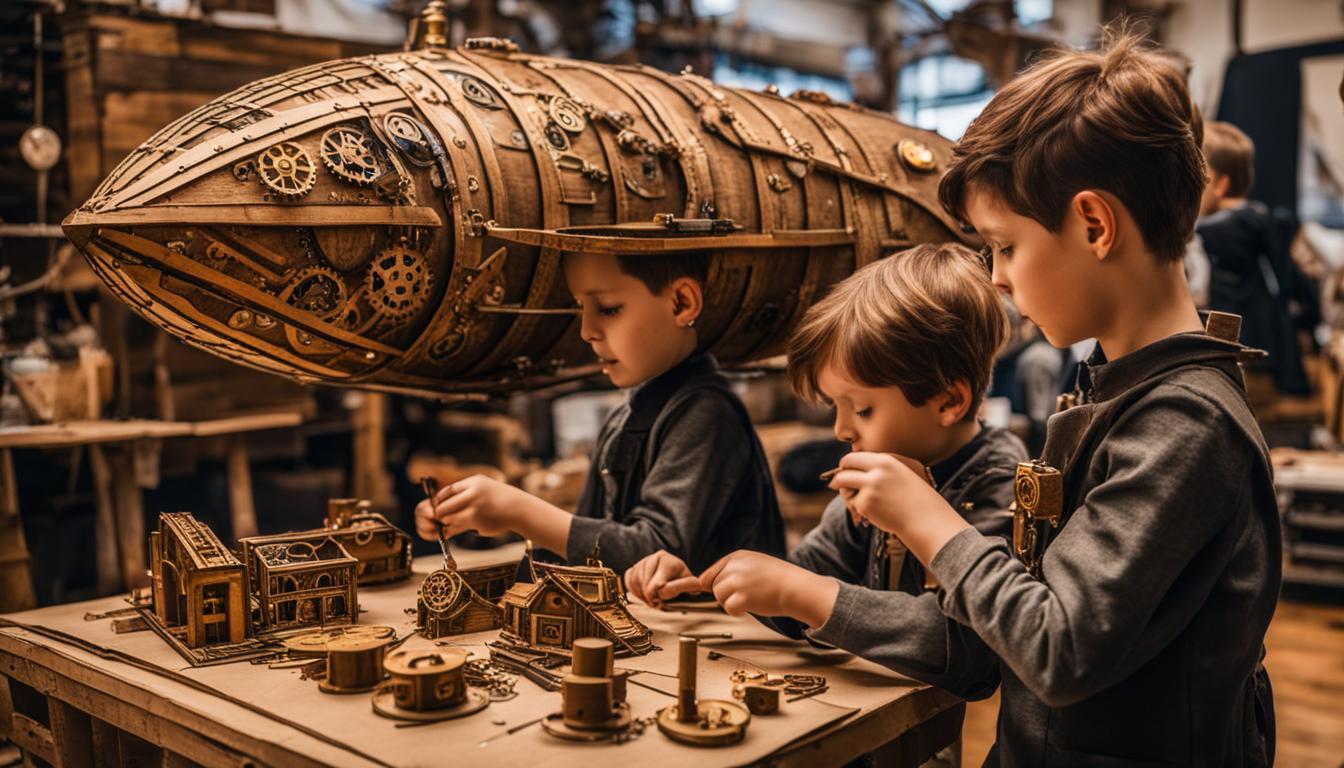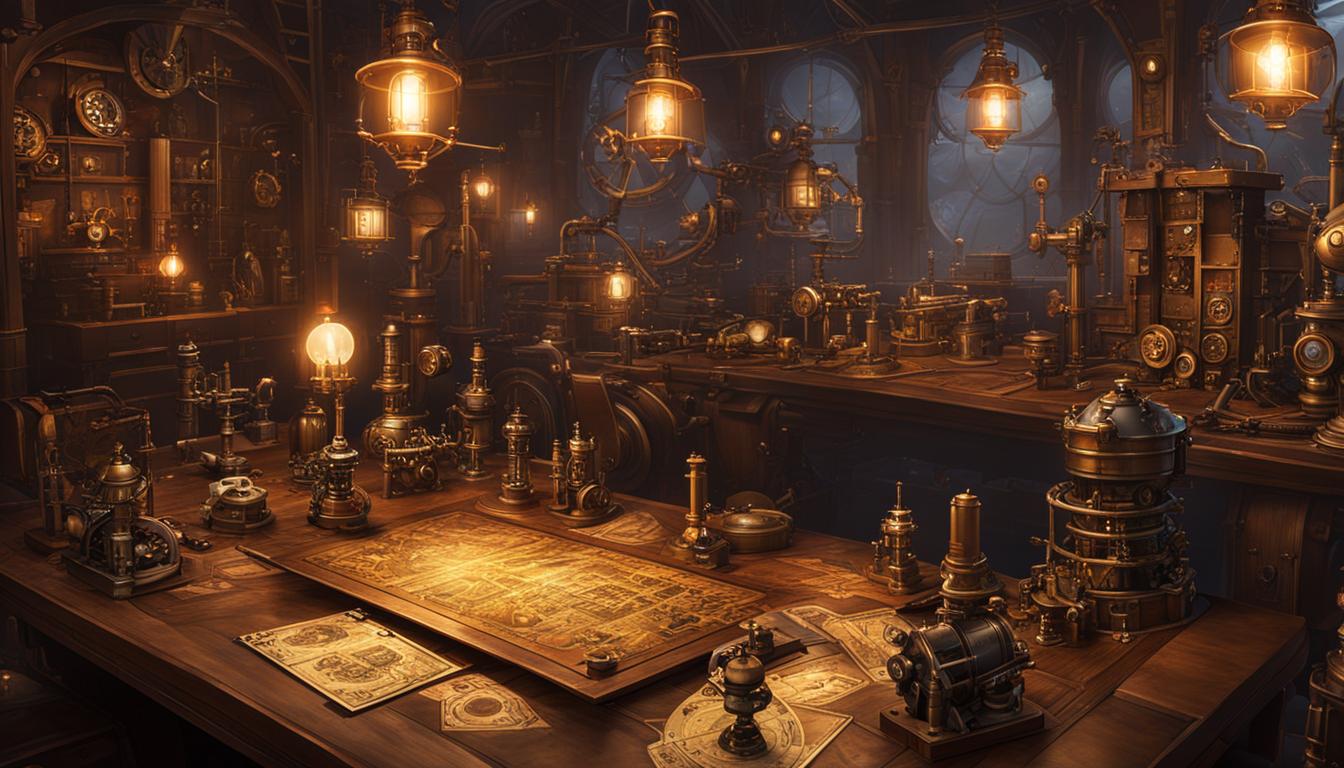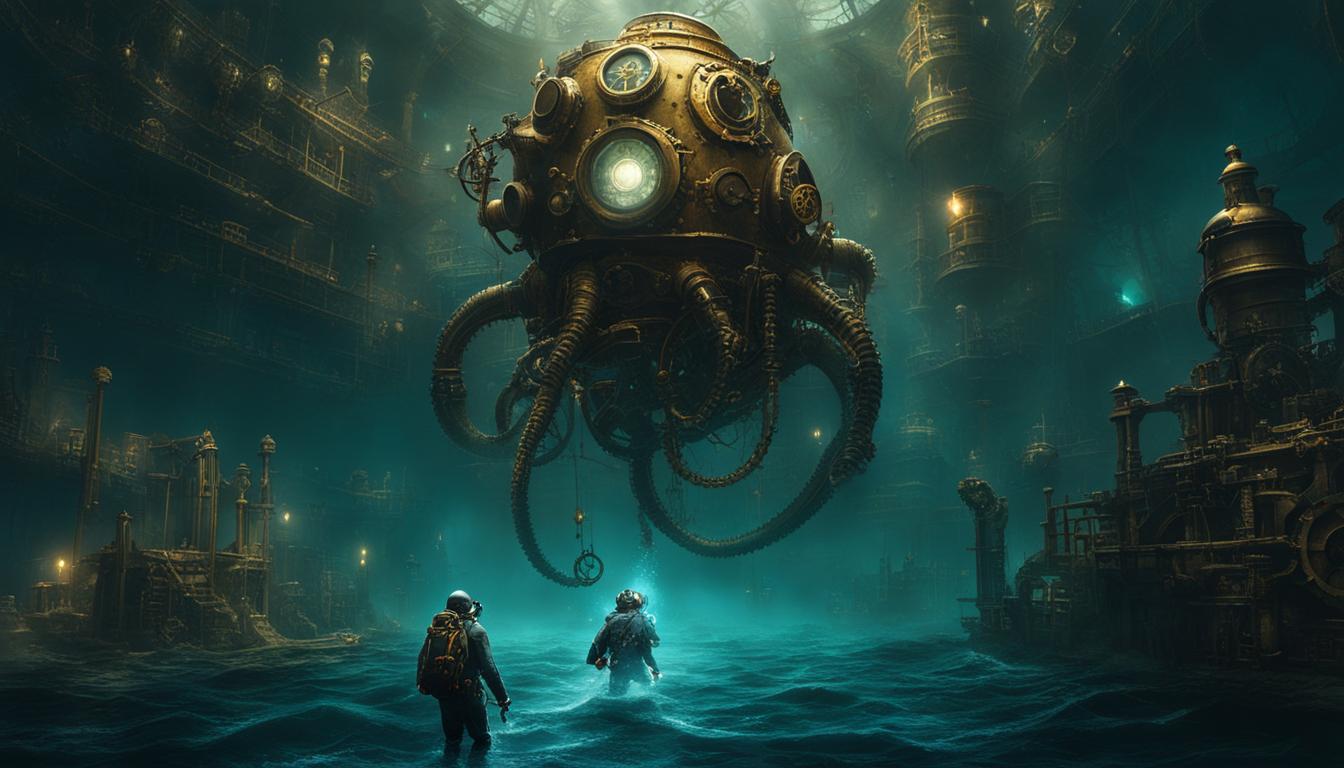Steampunk, the captivating sub-genre of science fiction, fuses the elegance of the Victorian era with the marvels of steam-powered technology. But what does it take to build a mesmerizing steampunk world? Delving into this fascinating realm demands a careful consideration of essential principles that bring it to life.
When embarking on the journey of world-building in steampunk, one approach is to start with a concept and gradually weave a compelling narrative around it. Think deeply about the intricacies of your society: Who manages the mundane tasks? Who enforces the laws? And who takes care of the little ones? These questions provide a sturdy foundation for your steampunk world. Moreover, understanding the values and ideals that shape your society, as well as exploring different story types, will help you craft a rich and immersive world.
Another approach begins with a character, whose story becomes intertwined with the cultural restraints or elements of the society. By examining how this cultural element is treated, who possesses authority over it, and how it impacts other aspects of the society, you can create a vibrant and captivating steampunk narrative.
Key Takeaways:
- Building a compelling steampunk world involves careful consideration of essential principles.
- Start with a concept or a character to shape your steampunk world.
- Questions about societal roles, values, and cultural restraints can help flesh out your world.
- Consider the retro setting and ensure it captures the essence of a steam-based society.
- The power source in steampunk should be consistent with the pre-electric era.
World-building in steampunk is an art that combines historical aesthetics with imaginative technology. By adhering to the essential principles and infusing your world with retro charm and fantastical contraptions, you can create a mesmerizing steampunk experience for your readers.
The Retro Element
In the world of steampunk, the retro element is a defining characteristic that sets it apart from other genres. Steampunk stories are typically set in a time known as the steam age, which bridges the gap between the industrial revolution and the widespread use of combustion engines. During this era, steam-powered technology was at the forefront, shaping the societies and landscapes of steampunk worlds.
While steampunk is often associated with Victorian England, it’s important to note that it can take place in various locations and time periods. Whether it’s the Wild West, Australia, or even China, what matters most is capturing the essence of a retro, steam-based society. The visual aesthetics, fashion, and architecture of the time should permeate the narrative, immersing readers in a world where gears, cogs, and steam-powered contraptions abound.
Steampunk authors have the opportunity to play with the unique blend of historical and fantastical elements that define the genre. By embracing the retro setting, they can transport readers to a time when steam-powered technology reigned supreme, offering a glimpse into a world unlike our own. This fusion of past and future creates a sense of wonder and adventure that is characteristic of the steampunk genre.
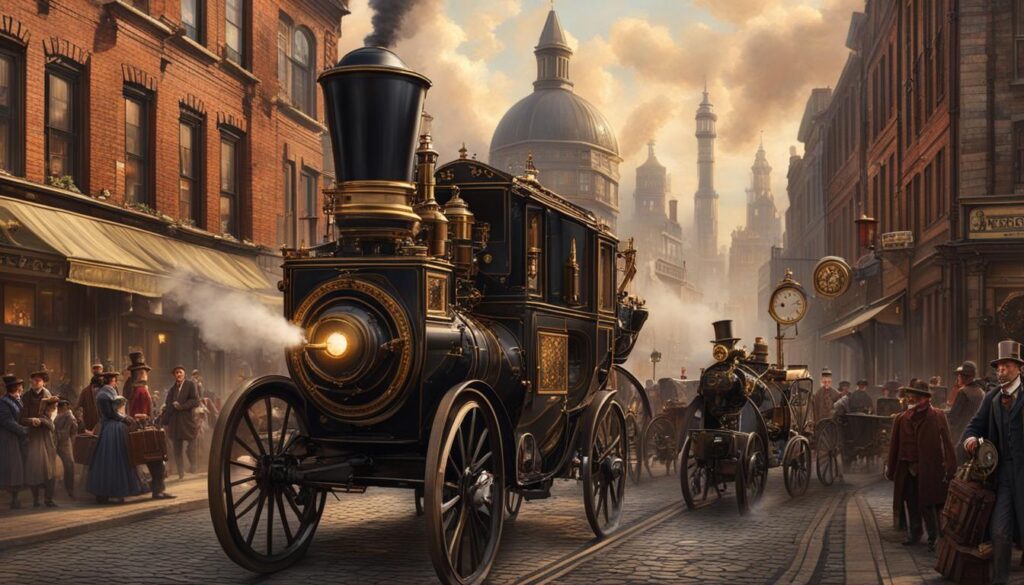
The Era in Steampunk: Steam Power Reigns
| Key Characteristics | Examples |
|---|---|
| Steam-powered technology | Steam engines, airships, mechanical limbs |
| Retro aesthetics | Bustle dresses, top hats, brass goggles |
| Victorian-era influences | High society, strict social hierarchies, steam-powered vehicles |
| Industrial revolution backdrop | Factories, smog-filled skies, rapid technological advancements |
As shown in the table, the era in steampunk is characterized by the prevalence of steam-powered technology, retro aesthetics, Victorian-era influences, and the backdrop of the industrial revolution. These elements work together to create a distinct atmosphere that transports readers to a bygone era filled with innovation and possibility.
In summary, the retro element is a key aspect of world-building in steampunk. By immersing readers in a society where steam-powered technology reigns supreme, authors can craft rich and visually engaging narratives. The era in steampunk captures the unique blend of historical and fantastical elements that define the genre, allowing readers to explore a world where the past meets the future.
The Fuel Element: Powering Steampunk Worlds
One of the distinctive features of steampunk is its unique power source. In this sub-genre, the absence of electricity as we know it gives rise to alternative and arcane technologies that fuel the steampunk world. Since the setting is typically pre-electric era, the lighting and power sources used should correspond to this time period.
Natural oils such as tallow or carbide are often employed for lighting in steampunk societies. These traditional fuel sources create a warm and atmospheric glow, adding to the overall retro aesthetic. It’s important for writers to consider the limitations and possibilities that arise from the absence of gasoline, as it opens up opportunities for imaginative and unconventional power sources.
“In the flickering light of the oil lamps, the inventor toiled away, harnessing the power of steam to drive his remarkable contraptions. The hissing and churning of the engines filled the air, a symphony of ingenuity blending with the scent of burning fuel.”
Steam-powered technology plays a significant role in creating the unique atmosphere of steampunk. From steam engines that drive trains and airships to intricate gears and levers that animate mechanical inventions, the power of steam is harnessed in various forms. This reliance on steam not only fuels the steampunk world but also sets it apart from other genres.
The fuel element in steampunk adds depth and authenticity to the world-building process, allowing writers to explore alternative power sources, incorporate historical elements, and infuse their narratives with a sense of wonder and adventure.
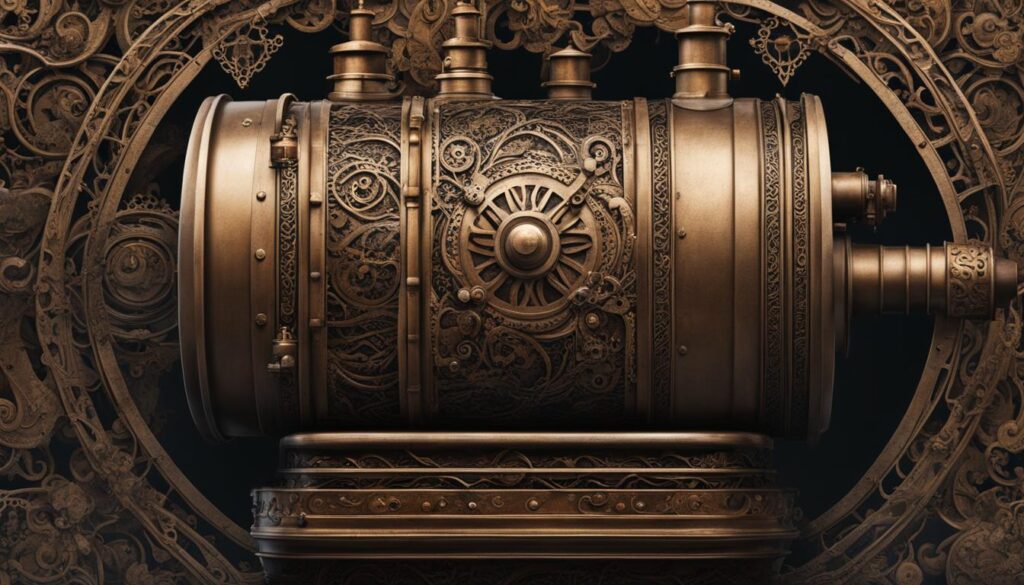
Fuel Element Comparison
| Fuel Source | Advantages | Disadvantages |
|---|---|---|
| Tallow | Creates a soft, warm glow | Requires frequent replenishment |
| Carbide | Provides a brighter light | Produces acetylene gas, which can be hazardous |
The table above offers a comparison of two common fuel sources used in steampunk settings: tallow and carbide. While tallow creates a cozy and nostalgic ambiance, it requires more maintenance due to its shorter burn time. On the other hand, carbide offers a brighter light but comes with the risk of acetylene gas, adding an element of danger to the narrative.
By carefully considering the fuel element and its impact on the steampunk world, writers can craft immersive stories that transport readers to a bygone era fueled by ingenuity and unconventional power sources.
The Contraption Element
Steampunk is not just about the retro setting and unique power sources; it’s also about the extraordinary contraptions that populate its world. These anachronistic inventions and innovations bring a sense of wonder and adventure to the steampunk narrative.
Picture a world where you can hop on a steam-powered airship and soar through the sky, or where automatons perform intricate tasks with precision. In the realm of steampunk, even everyday objects are transformed into marvelous contraptions. Fax machines whirr with life, elevators ascend gracefully, and holograms flicker to life before your eyes.
The contraption element is not limited to small-scale devices either. Submarines dive into the depths of unexplored seas, propelled by ingenious steam-powered engines. Clockwork robots, with their clanking gears and whirring mechanisms, aid characters in their quests and add an element of mystery.
These fantastical contraptions not only serve as awe-inspiring tools but also play a key role in the resolution of conflicts and the advancement of the plot. They become an integral part of the steampunk experience, capturing the imagination and leaving readers yearning for more.
FAQ
What are the essential principles of building steampunk worlds?
Building a compelling steampunk world requires careful consideration of various principles. Starting with a concept and filling in the story is one approach to world-building in steampunk. Understanding the ideals of your steampunk society and considering basic story types can also help in fleshing out your world.
What is the typical setting for a steampunk story?
Steampunk stories are typically set in the steam age, which refers to the post-industrial revolution and pre-combustion engine era. This means that the technology of the day is predominantly steam-powered. While steampunk is often associated with Victorian England, it can also be set in other locations such as the Wild West, Australia, or China.
What is the power source in a steampunk world?
Since steampunk is set in a pre-electric era, the lighting and power sources used should be consistent with this time period. Natural oils like tallow or carbide are often used for lighting. The absence of gasoline opens up opportunities for writers to imagine alternative or arcane technologies that can power their steampunk world. Steam-powered technology, such as steam engines, plays a significant role in creating the unique atmosphere of steampunk.
What are contraptions in steampunk?
Contraptions are anachronistic inventions and innovations that would be recognizable in today’s world but were not possible during the era in which steampunk is set. These contraptions can range from simple devices like fax machines or elevators to more complex inventions like robots, submarines, airships, and holograms. The contraption element adds a sense of wonder and adventure to the steampunk narrative, often leading to the resolution of conflicts or the advancement of the plot.

